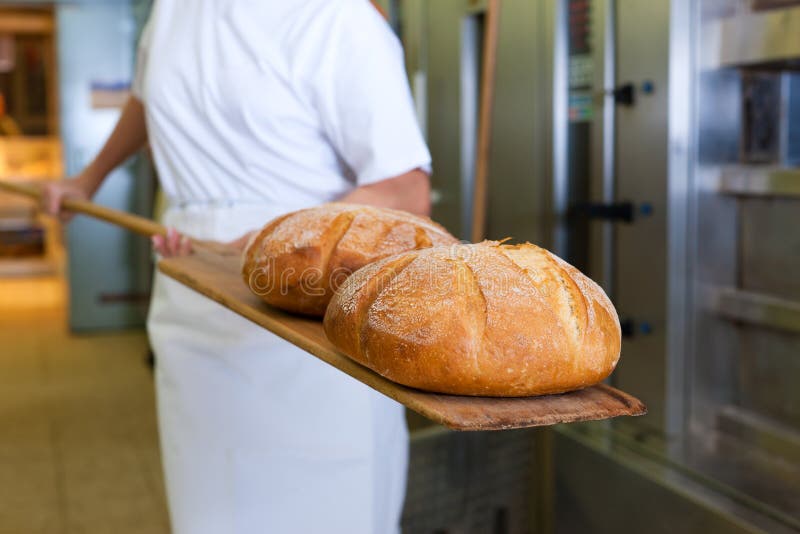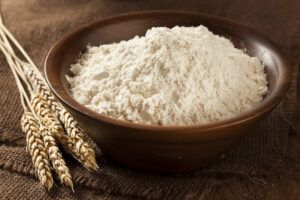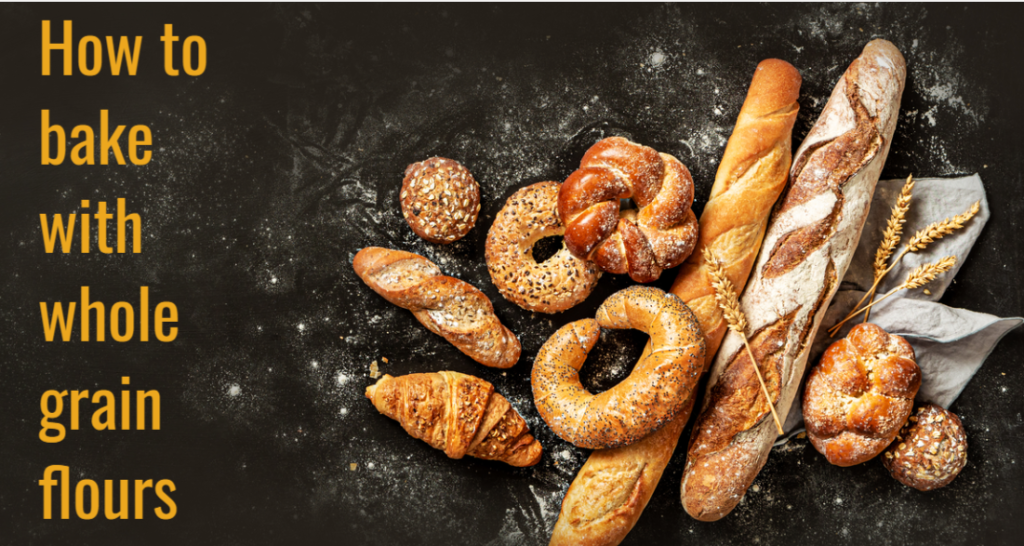==================
Affiliate Statement
Best Baking Tips is supported by our audience. When you purchase through one of our links, we may earn a small affiliate commission. As an Amazon Associate I earn from qualifying purchases. Your cost is not affected.
==================
How to Bake with Whole-Grain Flours
In this article, we will be showing you how to bake with whole-grain flour. Wheat is grown all over the world. There are different types of grain and are usually classified by hardness and color. Wheat harvests and brought to flour mills into flours using stone or roller mills.
The wheat kernel, also known as the wheat berry, is the flour-producing part of the wheat plant. The less processed grain is, the more natural advantages it will keep.
Bakers have a wide range of options when it comes to whole grains. In fact, choices range from wheat, oats, rye, and specialized grains like millet and quinoa.
Whole grains can help you live a better lifestyle. Baking with a range of whole grains is one way to do it. Making a move from all-purpose flour to whole grain flour may seem overwhelming at first. Your baked products will taste the same way as the original versions that use white flour. With this, you are also considering a healthier option. Get ready to know how to bake with whole grain flour!

Types of Whole Grain Flours
There are six types of whole wheat flour to choose from. Each has its own unique set of benefits and features:

-
Whole Wheat Flour
The Red wheat berries, sometimes known as “hard red wheat, are refined into whole wheat flour. Whole wheat flour has a rich color, strong flavor, and grainy textures. We link these features with whole grains because of the dark, reddish hue of the bran layer of kernels.
-
Spelt Flour
This type of flour is an ancient wheat strain. It combines the benefits of grains with a sweet flavor and a fine texture like all-purpose flour.
-
White Whole Wheat Flour
It’s made with whole wheat flour, not a blend of white and wheat flour, and it’s not bleached. It’s equal to traditional red wheat, containing fiber, proteins, vitamins, and minerals. White whole wheat flour has a distinct color and flavor that makes it an alternative for bakers. Most especially bakers who are afraid to use the red whole wheat flour because of its unique color and flavor.
-
Sprouted Whole Wheat Flour
This variety of whole wheat flour comes from a germinated red wheat kernel. The sprouting in the germination helps break down some starch and phytate. It makes the flour’s flavor softer and easier to digest.
-
Kamut Flour
The grain Kamut Khorasan is the wheat that is not a hybrid or changed. It is organic and cultivated, known for its nutritional value, ease of digestion. Also known for its sweet, nutty, buttery, and firm texture. Kamut grains have several health advantages. It is a good source of fiber, protein, and various vitamins and minerals.
-
Whole Wheat Pastry Flour
The soft white wheat kernels are another type of whole wheat, make whole wheat pastry flour. These soft wheat kernels have lesser proteins than hard wheat kernels. White whole wheat has baked products that are likely to all-purpose flour.
-
Other Grains
Most people think of wheat flour when baking. And it is the most popular. However, home and commercial bakers use other grains, too. Consider trying some of these for a nutrient boost of a different flavor. These usually exchange for equal amounts of the wheat flour a recipe calls for. For instance, one cup of wheat flour = one cup of rice flour. However, you often need to adjust the liquids and other ingredients to attain the proper texture.
Why use other flours?
Truthfully, wheat stands as a good traditional grain. When used as a whole grain (unprocessed) it offers excellent nutrition. However, some people are actually allergic to wheat or may have digestive issues from it. For them, using another grain, such as rice, oat, or quinoa, enables them to bake and safely enjoy.
However, even if you don’t suffer allergies or health issues from wheat products, other grains help diversify your food nutrients. And they bring about varying flavors, as well. Have you ever enjoyed buckwheat pancakes? Perhaps you prefer rye bread. Many people enjoy corn muffins and cornbread. Using oat flour offers a delightful texture and flavor, all bundled in great nutrition.
Some that you might already know include:
- Amaranth (Amaranthus cruentus)
- Barley (Hordeum vulgare)
- Buckwheat (Pagopyrum exculentum)
- Bulgur (Triticum ssp.)
- Corn (Zea mays mays)
- Oats (Avena sativa)
- Quinoa (Chenopodium quinoa)
- Rye (Secale cereal)
- Sorghum/Milo (Sorghum spp.)
- Wild Rice (Zizania spp.)
But others, less popular, include:
- Einkorn (Triticum monococcum)
- Farro/Emmer (Triticum turgidum dicoccum)
- Freekeh (Triticum turgidum) – Durum
- Khorasan Gran (Kamut) (Triticum turgidum truanicum)
- Kaniwa (Chenopodium pallidicaule)
- Millet (varieties include Panicum millaceum, Pennisetum glaucum, Setaria italica, Eleusine Coracana, Digitaria exilis)
- Rich (Oryza sativa)
- Teff (Eragrostis tef)
While finding these grains may not be easy, they do offer a great experience for those who try.
Tips on How to Bake Using Whole Grains
Notable Facts
- Whole grain flours are available in most grocery stores, but they might be locked up behind glass doors or kept with the other whole grain products.
- If you can’t find whole-grain foods where you usually shop, ask a manager to bring them out from behind the counter.
- The texture of most whole grains is very coarse, so it’s best to use whole grain flours in recipes that call for other coarse ingredients (such as rolled oats or bran cereal).
- Be sure to use whole grain flour within a few months of the “sell by” date.
- For freshness, buy flours in smaller quantities, rather than larger bags that might sit around for months.
- Some flours, such as barley flour and oat bran, are sold in resealable plastic bags so you can use only the amount you need without wasting what’s left over.
- Nut flours (such as an almond meal) are also available in some grocery stores or natural food stores. Nut flours are usually packaged in plastic bags.
- Using whole grain flour is a great way to add extra flavor, nutrition, and fiber to your baked goods and other dishes. Just remember that the texture is different from white flour.
Here are some tips for using whole grain flours:
- Be sure to combine with other ingredients that have a similar texture. For example, combine whole wheat flour with rolled oats, bran flakes, or chopped nuts.
- Use cold ingredients when mixing. It’s best to cut butter or fat into the dry ingredients before adding wet ones.
- Add only enough liquid to make the dough moist. Overworking the dough will develop the gluten in the flour and make the finished product chewy.
- Add spices or flavorings to enhance the taste of the flour.
- If you need to incorporate whole grain flour into a dry recipe, combine it with regular all-purpose white flour in a ratio of two parts white flour to one part whole grain for best results.
How to Bake with Whole-Grain Flours

Once you learn to manage the texture, replacing all-purpose flour with whole-grain flour becomes easier. There are distinct variations in texture and flavor. In most recipes, may replace half of the all-purpose flour with whole wheat flour.
For the easiest transition from ordinary flour to whole wheat use a recipe you have already tried. In fact, recipes that need more than 50% of whole wheat flour need extra care. So next, I’ll be showing you how to bake with whole-grain flour.
-
Start small
When transitioning to a whole grain lifestyle, start small for best results. It may not appear to make a difference at first. But as you begin to bake and experiment with whole wheat or other whole-grain flour, you’ll notice the difference it makes.
Try replacing 1/2 of the required amount of flour with whole wheat flour. This gives your taste buds time to adjust. Most people find they prefer the added flavors of the whole grain. The overly processed all-purpose flour is bland and tasteless in comparison.
-
Hydrate
White flour absorbs a lot less water than whole grain flour—bread recipes with “flour-to-water ratio,” known as a hydration ratio. To determine the ratio, always divide the water by the flour.
Hydration ratios in traditional bread recipes range from 65%. These often need a lot of kneading. The hydration ratios in popular no-knead white bread recipes range from 75 to 80 percent. What about whole wheat? Depending on the type of grain, we’re talking about a range of 85 percent to 110 percent.
Humidity offers more to consider, too. If your air is more humid, the flour holds some of that moisture. Therefore, you need to use a bit less liquid. However, when baking in drier air, you need to add a bit more liquid to attain the best results.
How will you know the right amount of liquid?
We find that experimenting and getting a feel of your batter or dough offers the best results. Trial and error might seem challenging. But in time, you discover that perfect feel.
-
Dough and gluten
The bran and germ included in whole wheat flour cause this issue. When you mix your dough, knead it, or fold it, the gluten strands in the dough are aligning and strengthened.
If you add whole wheat flour, the more bran and germ you’ll have in the dough, and the more gluten you’ll shred. As a result, if you use whole wheat flour, the volume of your loaf will generally drop.
Blending whole wheat and white flour into a simple loaf has a lighter texture and volume. The blending method is another way to get started with whole wheat flour. It allows you to raise the percentage of wheat until you reach 100%.
-
Mixing process
When using whole wheat flour, you don’t have to worry about overmixing. Mixing, in general, causes the elastic gluten in baked products to rise. When white flour gets too mixed, it stiffens, making it impossible for air bubbles to expand. The bran reduces the gluten in whole wheat flour; you don’t have to worry about overmixing.
Overmixing with white flour results in chewy products. But over mixing whole wheat flour results in a fluffy and fresh end product.
-
Leave it uncovered
Don’t hesitate to leave baked treats like brownies out in the open. These bars must be rested from refrigeration overnight. It allows the whole wheat to mature in an extended period softens the grain’s bran, and it smooths out.
Why Baking with Whole-Grain Flours is the Best Option For You
There is a considerable nutritional difference between refined and whole-grain flours. You can’t switch from white flour to whole flour. Expect making more changes for a perfect baked product. Refined grains lose their germ and bran, also a percentage of the vitamins and minerals.
The nutritional value of refined and whole-grain flours differs. Refined grains lose their germ and bran and up to 50% of B vitamins and minerals and the bulk of vitamin E.
-
Blood Sugar
Food with carbohydrates, even those made with whole wheat flour, affects your blood. Your body turns the carbohydrates in your meals into glucose, a simple sugar after you finish a meal.
-
Vitamin Content
Due to its vitamin content, whole-wheat flour has a nutritional value over any flour. There are folate, vitamin B, and riboflavin among the vitamins included in whole-wheat.
-
Fiber Content
One of the most significant nutritional values of whole wheat is fiber. The fiber level of whole wheat and white flour has a big difference. Fibers provide many health advantages. This includes the prevention of constipation, lowering of blood cholesterol.
-
Healthy Heart
Wheat at breakfast, whether in the form of cereal or bread, can help avoid heart attacks. Whole grains have nutrients that lower the risk of hypertension and heart attacks. Making a heart-healthy breakfast can protect you from heart conditions.
-
More energy
Whole wheat flour contains carbohydrates, starch, and sugar that help keep you energetic during the day. Additionally, it helps with constipation, nausea, and other stomach problems. It not only gives you strength, but it also improves your immunity.
The enthusiasm that comes from the idea of your baked goods becoming healthier is worth the shot. The time and effort of learning about whole grain baking have their advantages. If you’re ever in question, locate an entire wheat flour-specific recipe, and you’ll be able to do fine.
Read More:
Whole Grain Flour Nutrition Facts (nutritiondata)






